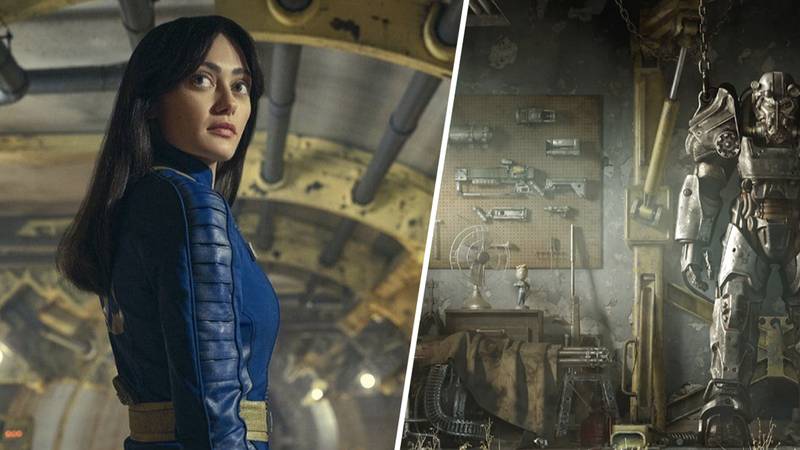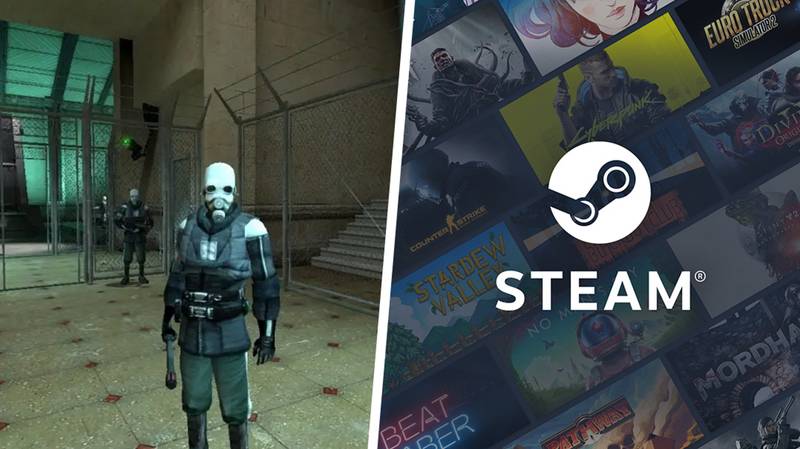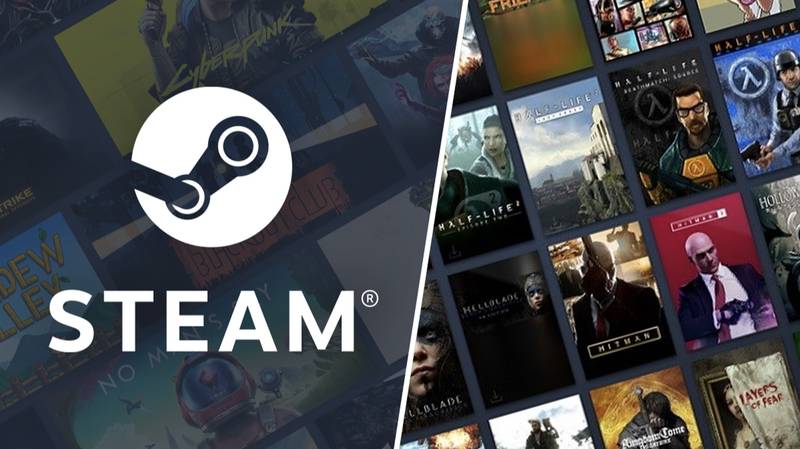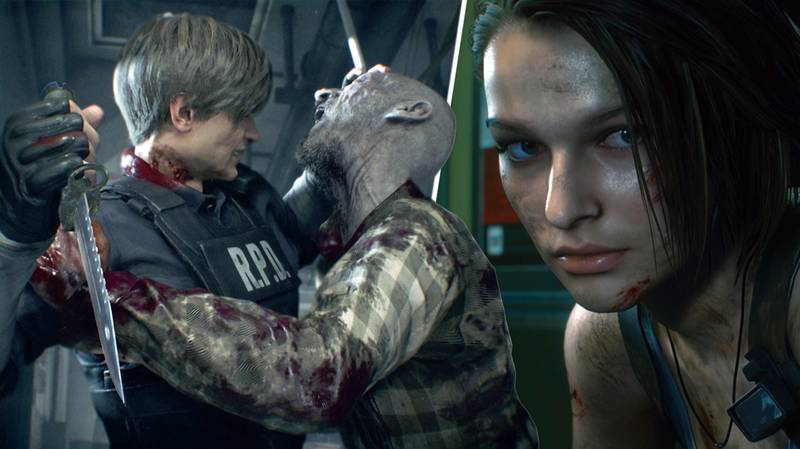'Cyberpunk 2077' Tells A Good Story, But It's Awkward To Play
Published
| Last updated

Featured Image Credit: CD Projekt RED
Cyberpunk 2077's Night City is a confusing place. Wreathed in a desert badland, the metropolis filled with mega complexes housing thousands of citizens, gangs, and warring corporations is alive with activity and commotion. The streets are teeming with pedestrians in all manner of futuristic punk fashions, the walls a forest of neon, adverts and grime. But if I look up I'm met with towering buildings, balconies, and, well, more adverts. This is a city ruled by capitalism, after all.
I've played through the first four hours of Cyberpunk 2077, and it's left me impressed with its slavish attention to detail. But I also wish it was a little less subtle.
Loading…
Those first hours took me through character creation, my introduction to the city, and set me on the path to my first major mission, a job for a fixer called Dex - a man looking to rip off one of the biggest corporations in town.
Character creation is hardly new for roleplaying games, though it is a first for CD Projekt RED. Previously, the developer's games have all had you playing characters with defined stories, most notably those of Geralt of Rivia. After choosing your character's look, you're given some points to spend on your attributes - body, reflex, intelligence, technical ability, and cool. While the names may be new to you, as in other RPGs they decide your health points, critical hit chance, hacking ability, and stealthiness. As you level up through the game, you can increase these stats and unlock more advanced perks.
The most important choice in character creation, however, is choosing from one of three life paths: Street Kid, Nomad, and Corporate. Each choice brings a completely different opening section to Cyberpunk 2077, gives you different dialogue options throughout the game, and potentially sets up more long-term ramifications.
I choose the Nomad path, which sees me starting outside Night City in the badlands that surround it. The game opens with me tearing the gang patch off my jacket, suggesting I've left the group on bad terms - something I suspect will feature later in the story.
But while I might be out of the gang, I'm not out of a job. A contact has set me up with someone who needs to smuggle a package into Night City. I meet the familiar face in a trailer home outside of the small badlands town I find myself in. Jackie Welles is the Night City mercenary you'll have seen in the game's trailers and concept art, drip fed out over the last few years.
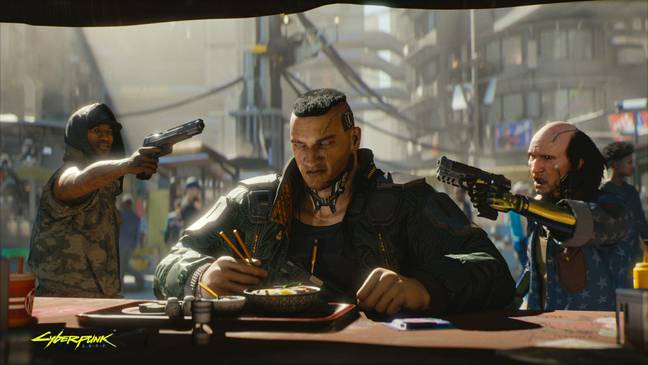
Welles has stolen a crate from a corporation transport and needs to get it past the border security and into the city, where he can sell it to the highest bidder. All of this is explained to you in-game without a cutscene - which may not sound like something remarkable, but it's scenes like this where you can see what's been a focus of the development team. Throughout my time with Cyberpunk 2077, I never leave the first-person perspective or have control taken away from me. And, while there are some repeated animations, it's also clear that for each major conversation, I'm being treated to carefully choreographed, bespoke performances.
This was all on show in the gameplay previews CD Projekt released in 2018 and 2019, but it's another thing to experience it first-hand. You enter these scenes seamlessly, drifting from free roaming the streets of Night City to sitting down at a bar with a character to chat, which makes it easy to get caught up in the story without realising you're in a mission briefing or talking to a quest-giver. Games may have largely moved away from sticking a glowing exclamation mark above someone's head, but this still feels like a step forward into better integrating quest stories into the wider game world.
The care taken to make the game feel seamless is a double-edged sword, though, as it does mean that rough patches jump out. For example, when I reach the border crossing and am called inside to talk to one of the officers, Welles shouts after me, "I'll keep the car running in case of a cock up!" Which seems pretty unwise while we're surrounded by border guards. And it stands out even more when I return to the car to find him leaning on it, rather than inside at the driver's seat. But these are small things.
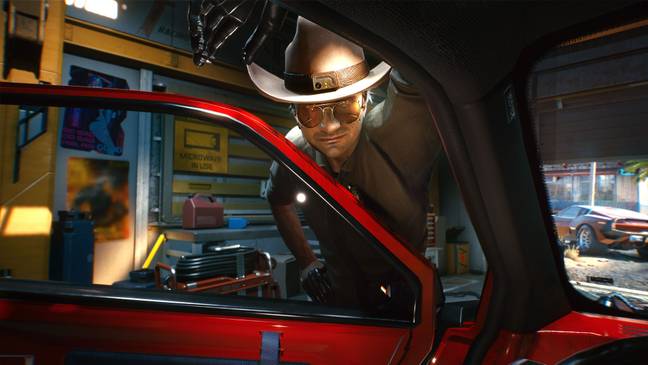
Hand in hand with the devotion to first-person immersion is a kind of organic storytelling that feels rooted in Cyberpunk's pen-and-paper beginnings. Missions are made up of multiple parts, some optional, and seemingly have several ways they can play out - altering the eventual outcome.
The main quest I play through in my preview has Welles connect me with a Fixer called Dex. He has a client who needs a team of mercenaries to help rip off a corporation, and he thinks I might be up to the job.
Before the heist can go ahead, Dex wants to meet me to size me up. He takes me on a car ride through the city while telling me the details of the plan. The job needs a military drone, which Dex has sourced from a gang called Maelstrom, who'd stolen it from a Militech Corporation convoy. But between Dex buying the drone and picking it up, the gang's leader has been killed and replaced by an underling called Royce. Dex doesn't know if Royce will honour the deal, and needs me to pick up the drone - he also says that there's a Militech exec investigating the convoy robbery who might be able to help. Dex also wants me to meet with the client who brought him the job in the first place.
The fixer drops me off in a strange part of town, explaining that it's up to me who I talk to first: the client or Royce.Then he drives away. I won't have to walk, though, because I can call my car, much like whistling for Roach in The Witcher 3, with a tap of the d-pad. Also like Roach, the car doesn't arrive as it should - I find it half sticking out of the ground on the next road over, and as I walk closer it explodes. Cyberpunk's new delayed November release date makes more sense after playing its current build.
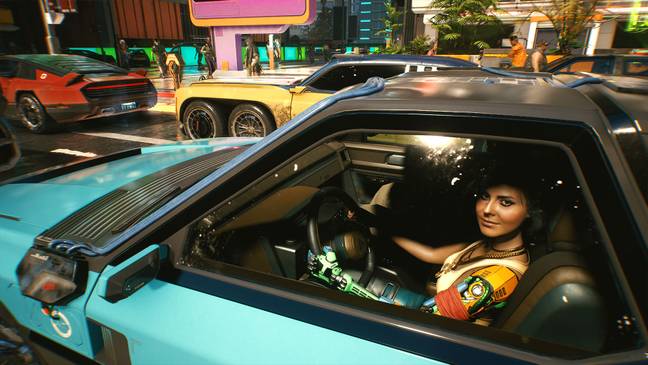
In each district of Night City there is a fixer who dots your map with potential jobs. As you come close they'll send you a text with the details of the job. As I'm travelling to meet Dex's client, I get a message telling me about a Tyger Claws gang leader nearby that someone wants killed. I'm told she's playing games in an arcade and I'm free to approach the job any way I want.
I've a few in-game hours until I can meet the client - though, there is the option to fast-forward time if I really don't want to wait around - so I start scouting the area. The arcade is in a grimy city block full of convenience stores, bars, and vending machines. There are people hanging around, drinking, chatting, looking aggressive; and somewhere in the block I can also hear someone calling for help, but I can't find them to lend a hand. Instead, I go back to the mission and try to ignore the looping pleading sounds that play in my ear throughout the job.
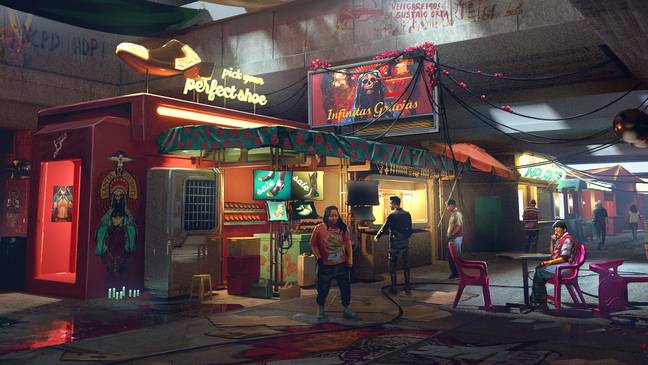
Down one secluded corridor I spot a member of the Tyger Claws. They're standing guard but don't seem to be patrolling. Holding the left bumper I switch to scanning mode that lets me mark him, adding his vision cone to my minimap, but I also spot a nearby vending machine that I can hack. I'm given the option to create a distraction. If I level up my character's intelligence enough and spend points on hacking perks then I might have more options, but distraction is all I need. The machine starts making a noise that draws over the guard, and I sneak behind to put him in a silent chokehold.
Free to explore, the corridor leads me out into an alley and the entrance to the arcade. There's two more guards and my target is inside, playing on one of the game cabinets. There's another device I can hack, a boiler, that will again distract the guards. So I try the same trick; I draw the guards away, sneak into the arcade, assassinate the target... And am immediately killed by the two guards who overheard me murdering their boss.
I reload, sneak back to the arcade and try to take out the guards first. I hack the boiler and sneak up behind one as they're walking over to investigate, and take them down. I turn around and the gang boss is just standing there, looking at me. They don't pull a weapon or do anything until I pull out my gun... And then they kill me.
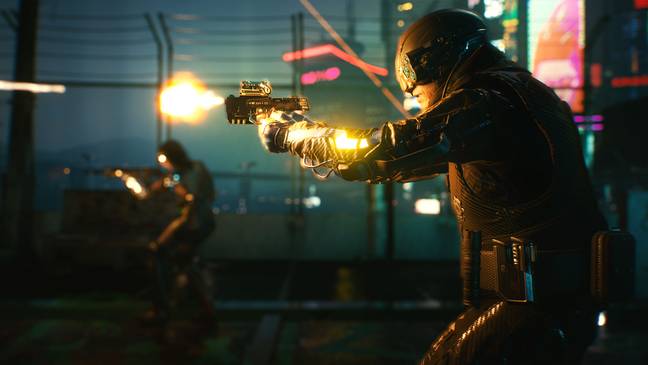
I try again twice, and each time one of the two guards or the gang leader catches me taking out one of their friends. Because of time I have to move on, but it's frustratingly muddy as to what actions I can pull off without getting caught. Earlier in the preview, while exploring my apartment block, I shot a guy in broad daylight with people around me, and the police weren't even called. Here, I use a silent takedown on someone and it alerts nearby enemies.
While I am confident there's a way to complete the side mission without going in shooting, I wasn't able to read the space clearly enough to see what other routes were available to me. It's easy to poke fun at games that flag interactive objects - Deus Ex: Human Revolution was criticised for highlighting points of interest in gold - but those visual cues give you a nudge to start thinking through your approach to a mission. Throughout my time with Cyberpunk 2077, I kept thinking: "I should be able to play this more cleverly." But I repeatedly found myself having to resort to shooting everyone.
Again, from everything CD Projekt RED has said about the game in interviews and shown off in previous game previews, I know there should be a way to approach missions with stealth. But when I was playing, admittedly with the pressure of a strict time limit, despite trying repeatedly to play stealthily and using my hacking abilities, I had to shoot my way through problems.
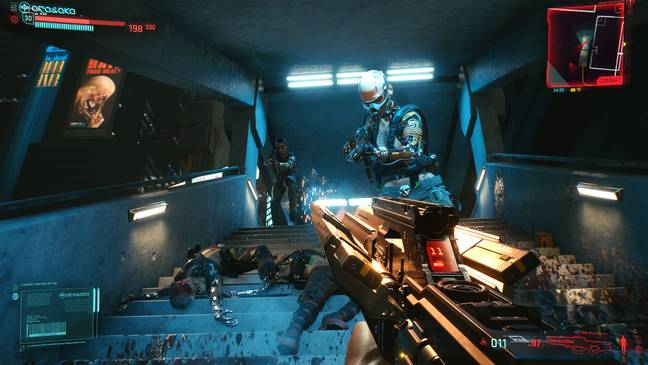
Side-mission abandoned, I whistle for my car - which doesn't explode this time - and head over to the stripclub where the client, Evelyn Parker, wants to meet. She approaches me at the bar and takes me to a private room to tell me about the job. She wants to steal a chip from Yorinobu Arasaka, the son of the CEO of the Arasaka Corporation, one of the biggest companies in Night City, and she wants me to break into his apartment to get it. I won't be going in blind, though, she tells me, as she has an implant that'll let her scan the room.
Parker takes me downstairs to a secret room in the basement of the club and hooks me up to a kind of full-sensory virtual reality machine. It looks like this may be something you'll be returning to several times, because there's a whole minigame associated with it. The machine loads me into a recording of Parker's last trip to Arasaka's apartment. She's been visiting him as an escort and using the time there to look around his rooms.

In the simulation, I can pause, fast-forward, and backtrack through the memory, but also focus on conversations that Parker wasn't able to hear herself but were picked up by her implants. So I can listen to Arasaka's phone call, for instance. This all feels a lot like the game Dontnod made before Life is Strange, Remember Me. I can also switch to different sensors, like a thermal sensor, to search for the temperature-controlled safe where the chip I need to steal is kept hidden. While I'm in the simulation I also detect all of the security systems in the room, giving the details to my crew's hacker, so that she can disable them during the heist. This appears to be an optional objective, so if I hadn't done it, presumably I'd face more resistance.
As I'm leaving the club, Parker suggests we cut Dex out of the job and split the earnings 50/50. I'm not given the option to answer at the time, but it suggests there are multiple ways this job can go down.
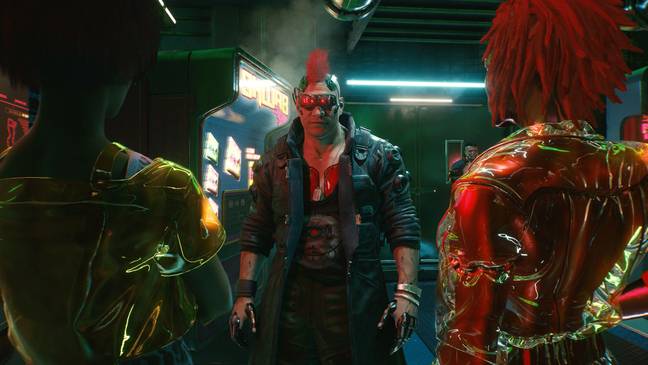
I could go straight to the Maelstrom's hideout to see if Royce will honour the agreement the old gang leader made with Dex. But suspecting he's going to betray me, I meet with the Militech agent first. She gives me a credit chip to give Royce when paying for the drone, presumably to give her the means to track their accounts.
When I finally visit the warehouse and meet Royce I start to see how all my choices so far have influenced the encounter. Royce doesn't honour the deal, and demands I pay him again, which I'm happy to do because I have the Militech credit chip. But I agree too readily, and he gets suspicious. He pulls a gun and I pull one, too - but I choose not to shoot him, and instead tell him to take the money so we can take the drone and leave. He does, but as soon as he puts the chip into his computer the lights go out and everyone starts shooting - you'll have seen this if you watched the gameplay preview CD Projekt RED released in 2018.
This isn't ideal. In part because I was hoping the operation would go smoothly and I could grab the drone and go straight to Arasaka's apartment; but mainly because the combat in Cyberpunk 2077 really isn't satisfying. I'm going to say straight off that this experience could well be impacted by the nature of the preview - I'm playing on a gamepad via a remote-access desktop. As a result, I find the controls to be a little unresponsive, my sights seeming to drag while I'm aiming, for instance. But if we leave the handling of the guns until I can play the game locally, the actual weapons seem muted. This is down to the sound and animations, but also because it's always a little disappointing when headshots aren't rewarded with an instant kill but a string of numbers popping out of an enemy's head.
I have to fight my way out of the meatpacking warehouse using my pistol and shotgun, and it's a frustrating experience. I'm able to kill one or two enemies before being taken out in just a few shots from the gang members. I try to use stealth and quick hacking tools to even the odds, but like with the side-mission earlier it's hard to make any headway. After dying a string of times, and finding the game has autosaved just as I'm about to be shot, I resort to the tried-and-tested coward's technique: I load up the game and sprint past every enemy, spamming my healing items, until I get to a boss battle at the end of the warehouse.
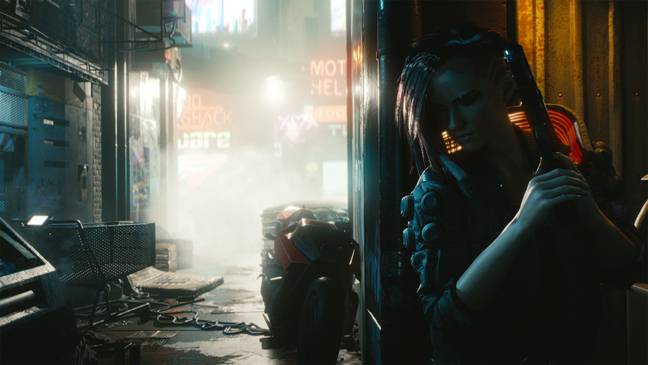
My demo wraps up as I leave the warehouse, running into the Militech agent and her strike team who are about to go in and wipe up the gang members I'd left behind. It appears that the next step would be to start the job at Arasaka's apartment, but as had become clear by this point, quests in Cyberpunk 2077 aren't clear cut, and there could well be more hurdles before I can rob the corporation exec.
There are a number of different ways the warehouse encounter could have gone. For instance, if I'd had enough of my own money I could have bought the drone outright, without Militech's help, and walked out without any problem. I could have skipped meeting the agent and tried to convince Royce to honour the previous deal. I could have shot Royce when I had the chance - I'd still have to fight my way out, but I would have skipped the boss fight at the end of the mission. Or I could have warned Royce about the Militech chip - though that would have meant I'd have fought Militech soldiers on the way out of the warehouse, instead of Maelstrom gang members.
This is where Cyberpunk's pen-and-paper roots come through most clearly. Throughout my conversations with characters, there are teases of different ways missions can play out. They may not radically change how the story plays out overall, but it lets me express my character. For example, next time I will definitely try and cut Dex out of the deal when it comes to robbing Arasaka - and I suspect he will try and kill me for it (though judging by the E3 2019 trailer, he will try to kill me anyway). But if any choice I make leads to Dex as an enemy, I at least want to be the sort of mercenary who is only out for themselves.
That's the part of Cyberpunk 2077 that excites me: choice, and seeing those choices reflected in the world. What I'm left cold on from my preview is the game that the story pulls you through. The devotion to immersion makes for a seamless narrative experience, but the environments are very difficult to read. I really want to play the game as a ghost who hacks and sneaks their way through encounters, but it was extremely hard to recognise the bits in the environment that would make that possible. And, if I am going to have to resort to combat, I really hope it's more impactful when played on my own computer in November, than it was playing on a remote desktop this week.
Topics: Cyberpunk 2077, CD Projekt Red






